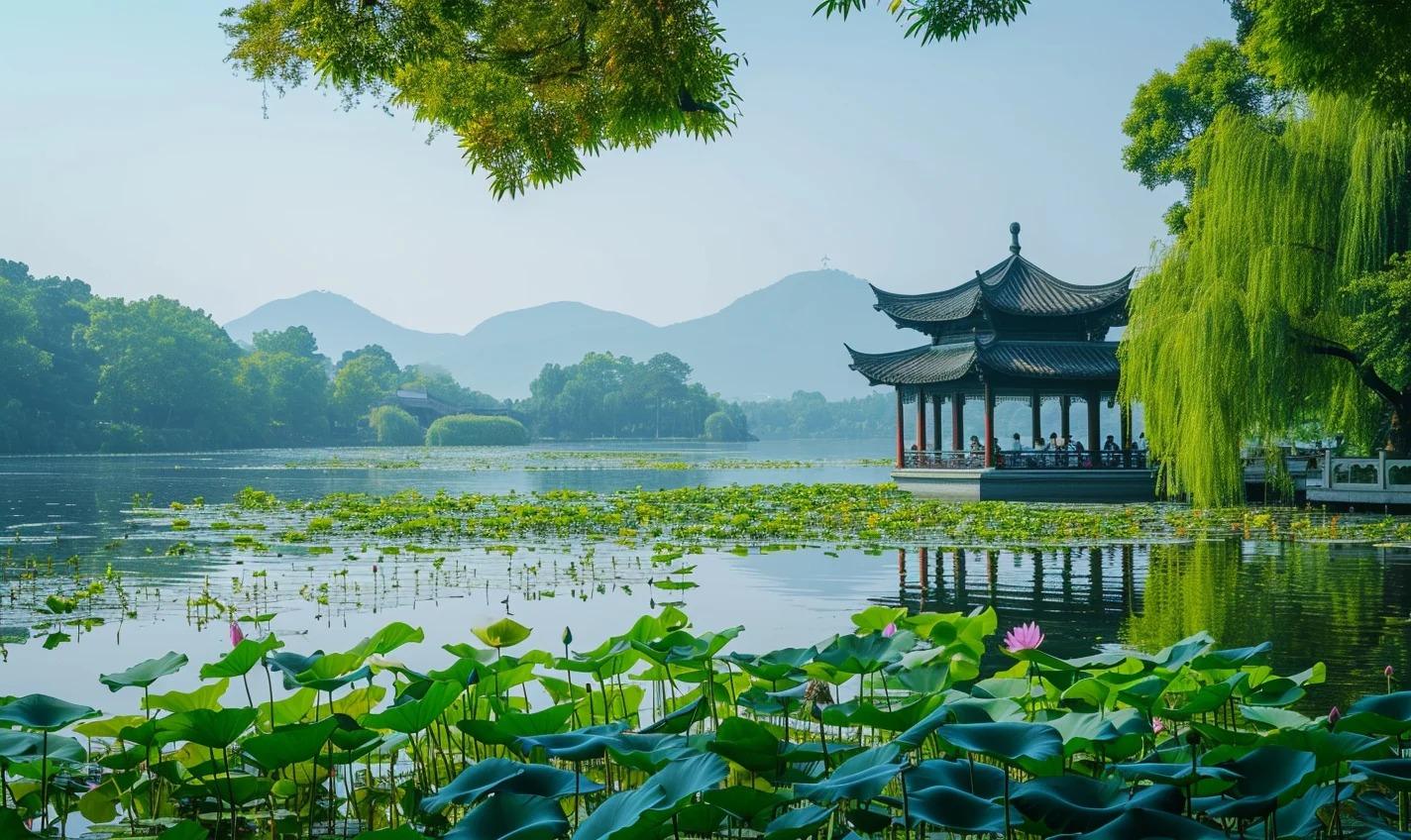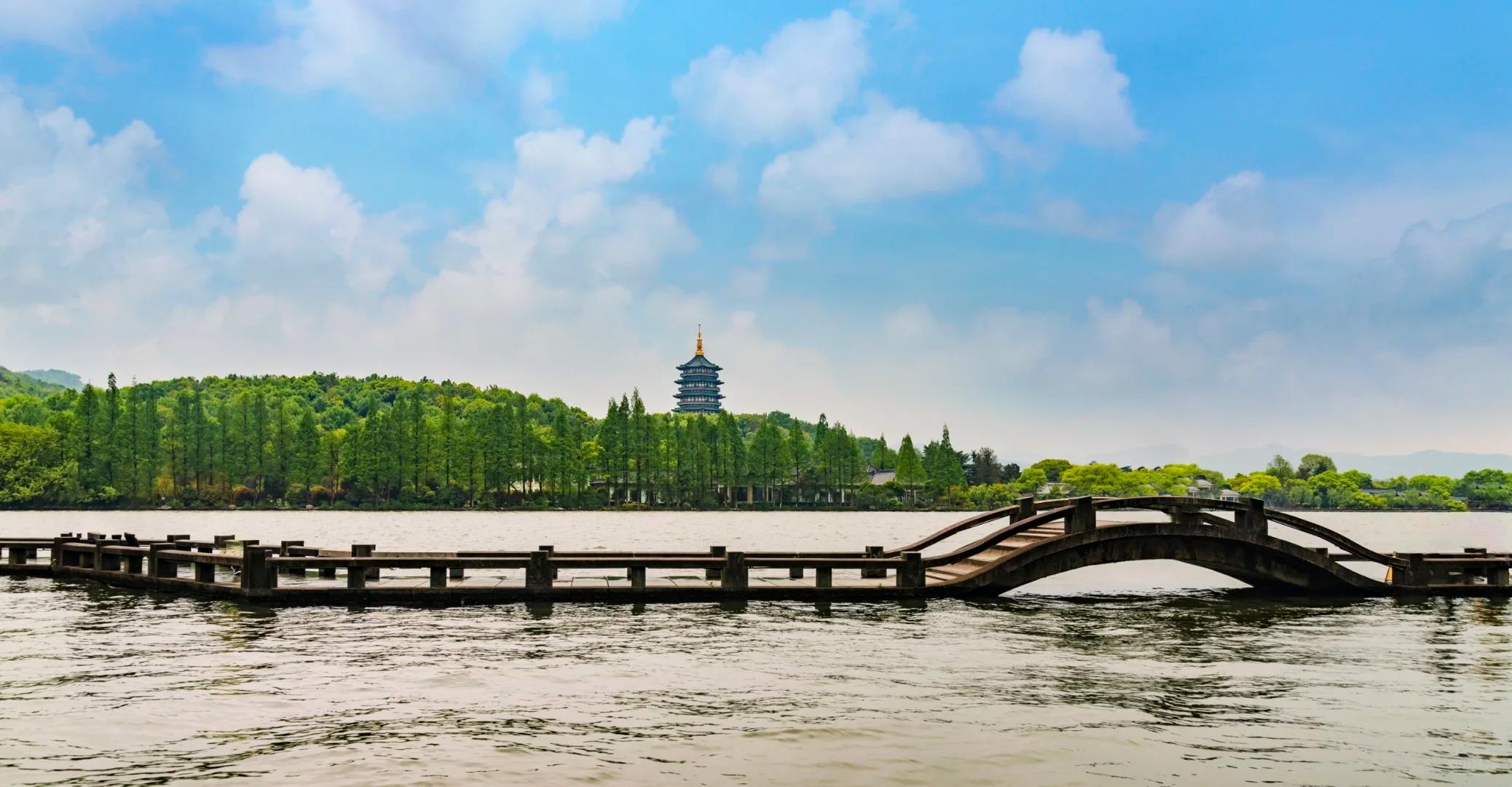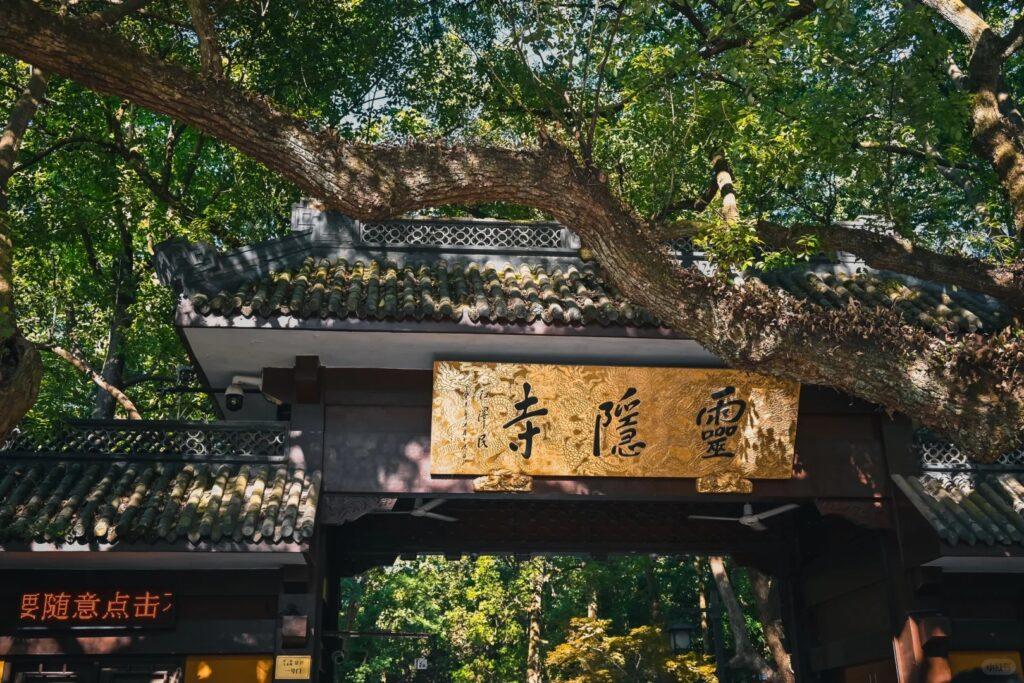Visiting Information
| Information | Details |
|---|---|
| Chinese Name | 西湖 (Xī Hú) |
| Location and Address | West Lake Scenic Area, Hangzhou, Zhejiang Province, China |
| Opening Hours | Open 24 hours (Some attractions within the area have specific opening hours) |
| Entrance Fee | Free (Some attractions within the area may charge fees) |
| How to Get There | By Metro: Line 1 to Longxiangqiao Station or Ding’an Road Station By Bus: Many routes available, including Tourist Bus Lines 1, 2, and 3 By Taxi: Ask for “Xi Hu” or “West Lake” |
| Best Time for Visit | Spring (March to May) and Autumn (September to November) |
| Contact Info | Phone: +86 571 8798 7345 Email: [email protected] |
Overview
West Lake, located in Hangzhou, Zhejiang Province, is one of China’s most renowned and beautiful freshwater lakes. Covering an area of 6.5 square kilometers, it is surrounded by hills on three sides and is famed for its scenic beauty that blends naturally with many famous historical and cultural sites.
Historical Background
West Lake has a history dating back over 2,000 years. Originally a lagoon adjoining the Qiantang River, it gradually evolved into a lake due to the silting of sand and mud. Over the centuries, many dynasties have contributed to its development and beautification. The lake was named a UNESCO World Heritage Site in 2011, recognizing its influence on garden design in China, Japan, and Korea over many centuries and its exceptional beauty.
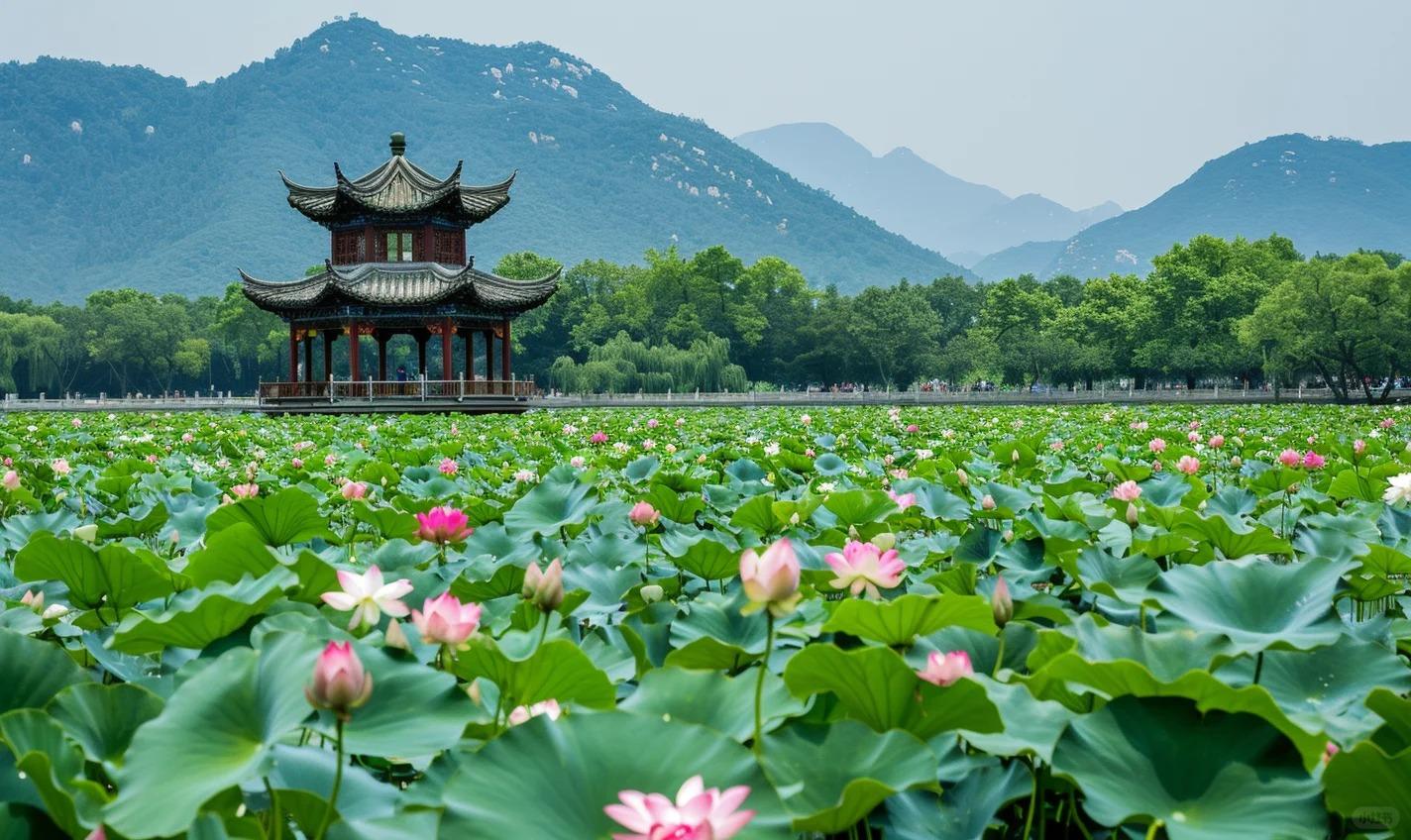
Architectural Features
- The Three Islands on the Lake: West Lake’s most distinctive features include Xiaoying Island, the largest, home to traditional gardens and pavilions; Huixin Pavilion on the smallest island, offering panoramic views; and Ruan Gong Islet, named after a famous poet, perfect for contemplation and enjoying the scenery.
- The Three Causeways: Essential elements of West Lake’s landscape include Su Causeway, the longest at 2.8 kilometers, lined with willows and peach trees; Bai Causeway, named after the poet Bai Juyi, connecting the north and south banks; and Yanggong Causeway, the shortest, known for its tranquil atmosphere and fewer crowds.
- Bridges: Numerous bridges adorn West Lake, with the Broken Bridge being the most famous. Despite its name, the bridge is intact and is renowned for its beauty during snowfall, when one side appears snow-covered while the other doesn’t, creating a “broken” effect.
- Gardens and Pavilions: Traditional Chinese gardens and pavilions line the shores of West Lake, showcasing classical Chinese landscape design. These include the Guo’s Villa, Huagang Park (Flower Harbor Park), and the Yu Feng Spa, each offering unique views and experiences of the lake.
- Ancient Pagodas: Pagodas form an integral part of West Lake’s skyline. The Leifeng Pagoda, originally built in 977 AD and reconstructed in 2002, offers panoramic views of the lake. The Baochu Pagoda, standing atop Baoshi Mountain, is another iconic structure that has watched over the lake for centuries.
Cultural Importance
West Lake holds immense cultural significance in Chinese history and art. It has inspired countless poets, painters, and artists throughout the ages. The lake is associated with many legends and folk tales, including the famous story of the White Snake. The “Ten Scenes of West Lake” have been celebrated in Chinese literature and art for centuries, each capturing a unique aspect of the lake’s beauty in different seasons and times of day.
Surrounding Attractions
- Lingyin Temple: One of the oldest and most significant Buddhist temples in China, located just west of West Lake. Founded in 326 AD, it features numerous halls, grottoes with intricate Buddhist carvings, and a 19.6-meter-tall statue of Sakyamuni Buddha. The temple complex is surrounded by forested hills, creating a serene atmosphere for spiritual contemplation.
- Leifeng Pagoda: A five-story tall tower on the south bank of West Lake, originally built in 975 AD and reconstructed in 2002. It offers panoramic views of the lake and houses a museum showcasing the history and legends associated with the pagoda. Visitors can climb to the top for breathtaking views and learn about the pagoda’s role in the famous Legend of the White Snake.
- China National Tea Museum: Located near Longjing Village, this museum provides an in-depth look at China’s tea culture, particularly focusing on the famous Longjing (Dragon Well) green tea that originates from this region. The museum features exhibits on tea history, processing techniques, and traditional tea ceremonies, offering visitors a chance to taste authentic Longjing tea.
- Xixi National Wetland Park: Although not directly adjacent to West Lake, this nearby attraction is the first and only national wetland park in China, combining urban life, farming, and culture in a unique wetland environment. The park offers boat tours, hiking trails, and opportunities to observe local flora and fauna.
- West Lake Museum: Situated near the lake, this museum offers exhibits on the history, culture, and management of West Lake, providing visitors with a deeper understanding of this iconic landmark. The museum showcases artifacts, historical documents, and interactive displays that illustrate the lake’s evolution and significance over the centuries.
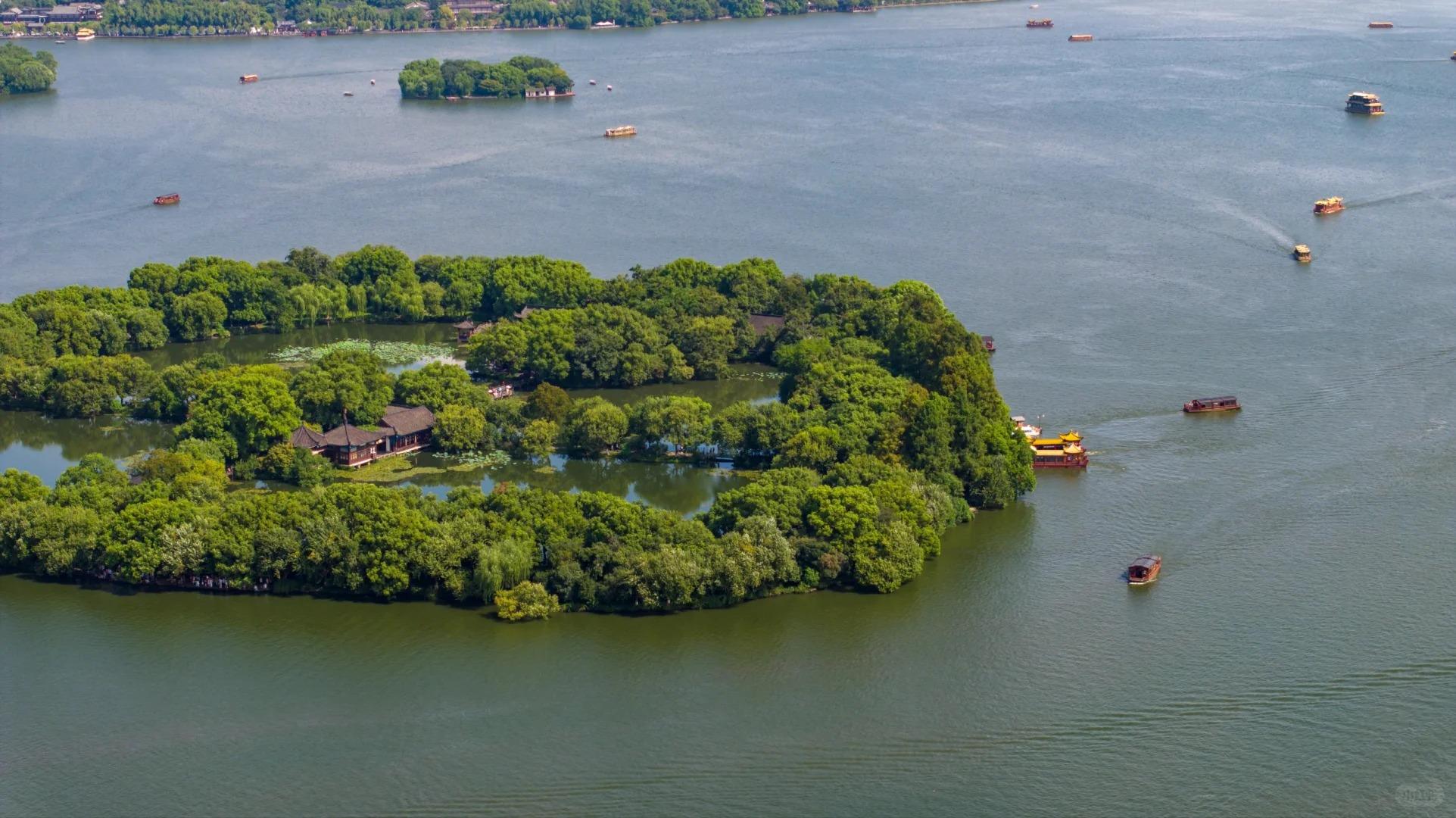
Photography Opportunities
- Sunrise and Sunset Views: The golden light reflecting off the water’s surface, silhouetting the surrounding landscape, creates breathtaking scenes that have inspired artists for generations.
- Reflections: The mirror-like images of surrounding mountains and architecture in the calm waters of West Lake provide unique compositional possibilities, particularly striking on still days and creating surreal, dreamlike photographs.
- Misty Scenes: Early mornings, especially in spring and autumn, lend an ethereal quality to West Lake. The fog-shrouded islands, bridges, and pagodas create atmospheric images that capture the lake’s mysterious beauty.
- Traditional Boats and Bridges: These elements combine to create quintessential Chinese landscape images, particularly when captured during the golden hours of early morning or late afternoon.
- Seasonal Flora: Cherry blossoms in spring and lotus flowers in summer provide vibrant foreground elements for West Lake photographs, adding depth and interest to images of the lake and its surroundings.
- Illuminated Night Scenes: Particularly during festivals, the lights reflecting on the water and illuminating the architectural features create dramatic and romantic photographic opportunities.
- Ten Classic Scenes: Including “Three Pools Mirroring the Moon” and “Spring Dawn at Su Causeway,” these iconic views have been celebrated in Chinese art for centuries, allowing photographers to connect with the rich cultural history of West Lake.
Modern Importance
- Tourism Hub: West Lake attracts millions of domestic and international visitors annually, serving as a showcase of Chinese natural beauty and cultural heritage, and contributing significantly to Hangzhou’s tourism industry and economy.
- Cultural Preservation: The lake plays a crucial role in preserving traditional Chinese landscape design, acting as a living museum. Continued maintenance and restoration efforts ensure that future generations can experience and learn from this important cultural landmark.
- Environmental Conservation: West Lake acts as an important ecological area in urban Hangzhou, providing habitat for various plant and animal species, helping regulate the local climate, and serving as a model for urban green space management.
- Educational Resource: The lake offers unparalleled opportunities for learning about Chinese history, culture, and nature. Schools and universities often use the lake and its surroundings as an outdoor classroom for subjects ranging from environmental science to art history.
- Recreational Space: West Lake serves as a vital recreational area, offering locals and visitors a place for leisure and relaxation. Its paths, gardens, and open spaces provide a much-needed respite from urban life and contribute to the physical and mental well-being of the community.
- Economic Driver: Beyond tourism, West Lake supports a range of industries including hospitality, traditional crafts, and cultural performances, providing employment and economic opportunities for the local population.
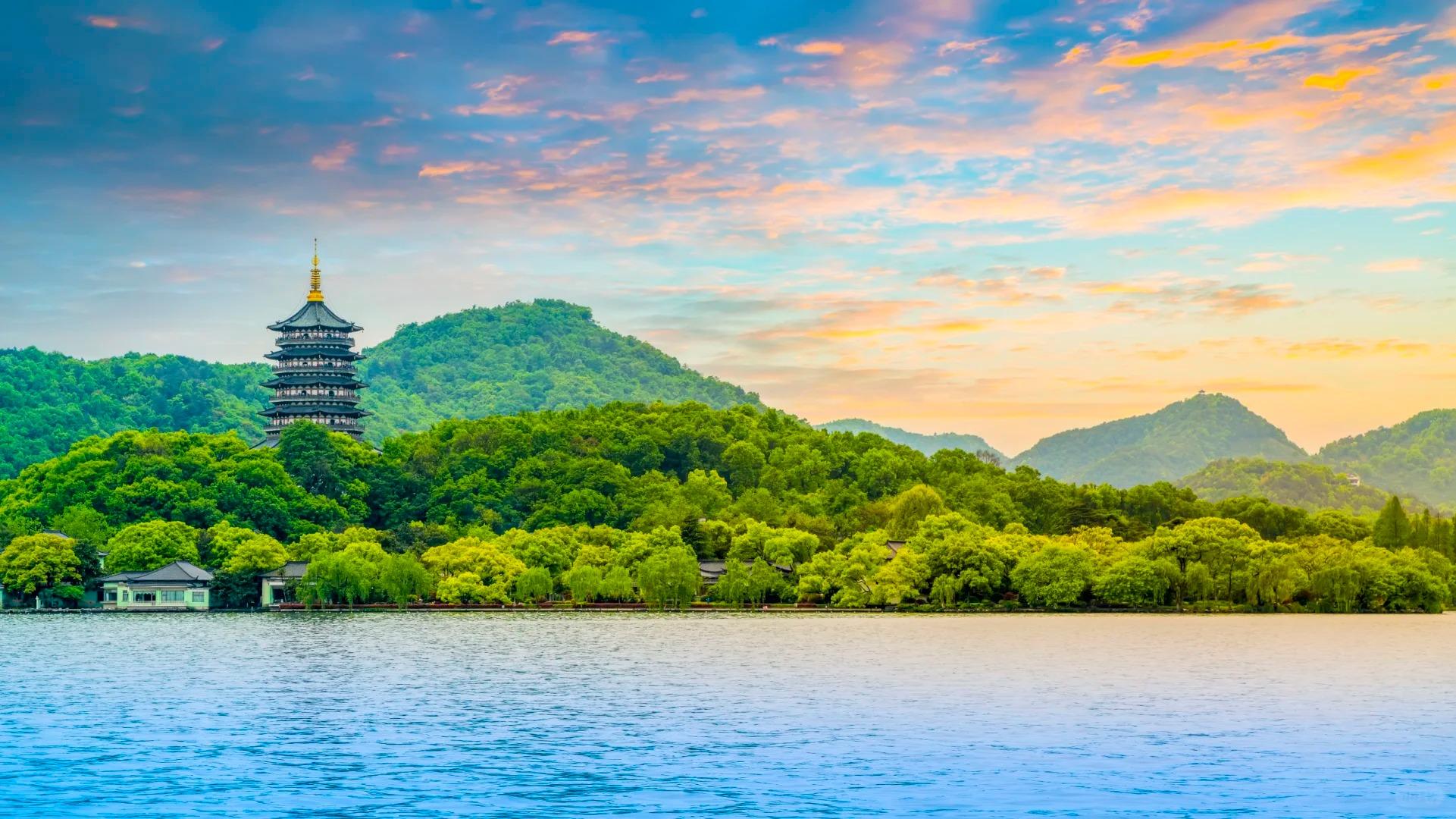
FAQ
- What is West Lake famous for?
West Lake is famous for its picturesque landscape, historical and cultural significance, and its influence on Chinese garden design. It’s renowned for its scenic beauty, including the Ten Classic Scenes, and its role in inspiring countless works of art and literature throughout Chinese history. - What’s inside West Lake?
West Lake features numerous attractions including islands, causeways, bridges, gardens, pagodas, temples, and museums. It also contains various plant species, particularly lotus flowers and willows, and is home to diverse wildlife. - Is West Lake free?
Yes, West Lake itself is free to visit. However, some specific attractions within the West Lake Scenic Area may charge entrance fees. - Is West Lake worth visiting?
Absolutely. West Lake is considered one of China’s most beautiful and culturally significant sites. Its natural beauty, historical importance, and cultural attractions make it a must-visit destination for anyone traveling to Hangzhou or eastern China. - What to do in West Lake?
Visitors can take boat rides on the lake, walk along the causeways, visit temples and pagodas, enjoy traditional gardens, watch cultural performances, try local cuisine, visit museums, and photograph the scenic views. Seasonal activities like viewing plum blossoms, lotus flowers, or autumn foliage are also popular. - How do I get to West Lake in the local city?
In Hangzhou, you can reach West Lake by taking Metro Line 1 to Longxiangqiao Station or Ding’an Road Station. Numerous bus routes also serve the area, including Tourist Bus Lines 1, 2, and 3. Taxis are readily available; simply ask for “Xi Hu” or “West Lake”. - How to visit West Lake?
To visit West Lake, plan to spend at least a full day exploring the area. Start with a walk along Su Causeway or take a boat tour for an overview. Visit key attractions like Leifeng Pagoda or Lingyin Temple. Consider hiring a guide or using audio guides to learn about the lake’s history and legends. Remember to wear comfortable shoes and bring a camera. Early morning or late afternoon visits can offer the most picturesque views.


